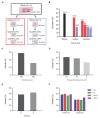Novel Ex Vivo Zymography Approach for Assessment of Protease Activity in Tissues with Activatable Antibodies
- PMID: 34575469
- PMCID: PMC8471274
- DOI: 10.3390/pharmaceutics13091390
Novel Ex Vivo Zymography Approach for Assessment of Protease Activity in Tissues with Activatable Antibodies
Abstract
Proteases are involved in the control of numerous physiological processes, and their dysregulation has been identified in a wide range of pathologies, including cancer. Protease activity is normally tightly regulated post-translationally and therefore cannot be accurately estimated based on mRNA or protein expression alone. While several types of zymography approaches to estimate protease activity exist, there remains a need for a robust and reliable technique to measure protease activity in biological tissues. We present a novel quantitative ex vivo zymography (QZ) technology based on Probody® therapeutics (Pb-Tx), a novel class of protease-activated cancer therapeutics that contain a substrate linker cleavable by tumor-associated proteases. This approach enables the measurement and comparison of protease activity in biological tissues via the detection of Pb-Tx activation. By exploiting substrate specificity and selectivity, cataloguing and differentiating protease activities is possible, with further refinement achieved using protease-specific inhibitors. Using the QZ assay and human tumor xenografts, patient tumor tissues, and patient plasma, we characterized protease activity in preclinical and clinical samples. The QZ assay offers the potential to increase our understanding of protease activity in tissues and inform diagnostic and therapeutic development for diseases, such as cancer, that are characterized by dysregulated proteolysis.
Keywords: Probody therapeutics; cancer; diagnostic; in situ zymography; protease activity; therapeutic.
Conflict of interest statement
All authors are current or former paid employees of CytomX Therapeutics, Inc. One or more authors are inventor(s) on a patent application covering the subject of this manuscript.
Figures





References
-
- Narayanan S. Multifunctional roles of thrombin. Ann. Clin. Lab. Sci. 1999;29:275–280. - PubMed
LinkOut - more resources
Full Text Sources
Other Literature Sources

